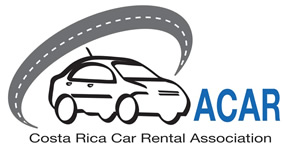Do I need to rent a GPS?
How to find your way around Costa Rica
Costa Rica is a small country but its general lack of road signage and few formal addresses, mean that a GPS is a travel essential for any vehicle. Backed up with a paper map from the car rental agency, navigating Costa Rica is a breeze—well, almost!
No formal address system
There’s jokes about the lack of address system in Costa Rica, but whether funny or not, the truth behind these jokes is reality. While it’s an endearing part of local culture, getting around can be less than easy…
There are official street names and numbers in the capital city but no one really uses them. Instead, directions are given by known landmarks, even after that landmark has long gone. Now you can find your hotel by following directions from the local church, two blocks south and then take the first left after the big mango tree until you see the large wooden gate in front of where the market used to be held, but we think it’s easier to plug coordinates into your GPS and go!
What about other options?
We’ve discussed a number of alternatives to renting a GPS system from the car rental agency:
Bringing your own GPS system
This may seem like a money saver, until you see that the map download costs up to $150.
WAZE
The growth of Waze has been incredible in Costa Rica, but it remains mostly a city tool. It is valuable for avoiding traffic and has lots of enthusiastic users, however, its accuracy for locations has been called into question. While the volunteers that have established the system here have put in long hours to get it online; it will need further edits and adjustment before its accuracy can be tested outside of the Central Valley.
Google maps
Despite the vast investment Google have made into mapping the world, this internet giant seems to hit problems in little Costa Rica. While the biggest problem was the incorrect marking of the border between Nicaragua and Costa Rica which Nicaragua then blamed for beginning an ongoing territory war between the two countries that even the U.N. can’t resolve.
On a less dangerous level, but annoying nonetheless, Google maps tends to underestimate journey times for Costa Rica, often by a number of hours for longer drives. This can easily leave to oversights in itinerary planning and allows visitors to plan an unrealistic vacation in terms of travel.
Tourist attractions and other points of interest are also frequently mismarked on the maps.
While the maps can give a good visual impression of the country, we strongly advise that Google is used as only a support tool and not the primary means of navigating the country.
Internet issues
Visitors to the country often stick to the tourist trail and drive to the most popular locations and beaches, such as Arenal, Jaco and Manuel Antonio. While the more developed tourist spots tend to have good internet connection, it doesn’t always mean that the roads between them have the same reliable coverage. While Google maps have introduced their offline maps to download to avoid such issues on the road; the accuracy of the maps means that Google is not the solution.
One of the biggest downfalls of using a smartphone or similar to navigate the roads in Costa Rica is that in the quietest most rural roads is where signage is likely non-existent and internet coverage is likely to be just as absent.
Technology changes quickly and while it is clear that the GPS system won’t last forever; it is still the best and fastest method to finding the way around Costa Rica right now!

Leave a Reply